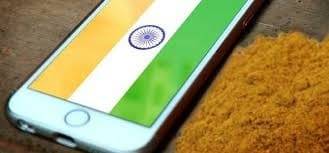Commerce & industry minister Piyush Goyal is scheduled to hold detailed consultations in the coming week to move forward with the strategy and also seek measures to boost local production wherever possible.
From textiles fabrics, refrigerators and suitcases to antibiotics such as amoxicillin, erythromycin & metronidazole, vitamins and insecticides, the government has begun a hunt for 1,050 items from across the world as supplies from China, which accounts for over 50% of India’s imports, are hit due to coronavirus.
Also on the list are automatic data processing machines, diodes and semiconductor devices, auto parts and several steel & aluminium items and mobile phones.
The commerce department, which has already held at least one round of detailed consultations, has shot off letters to Indian missions across the globe to identify potential suppliers. A detailed analysis of potential replacement markets has been undertaken and shared with other ministries and foreign missions, sources.
In case of antibiotics, for instance, Switzerland and Italy were identified as potential sources given that they are among the top exporting countries along with China.
While there has been a positive response from some of the countries, finding alternative sources for the supply of electronics and mobile phones and their inputs is proving to be a tough task given the complete dominance that China has in the sector.
Besides, other countries would also be chasing the same sources to bridge the gap due to a breakdown in the supply chain.
Commerce & industry minister Piyush Goyal is scheduled to hold detailed consultations in the coming week to move forward with the strategy and also seek measures to boost local production wherever possible.
A key theme of the minister’s discussions with government agencies and industry representatives will be to implement a plan to push the export of 500-550 items where India has the potential to fill the gap created by China.
A preliminary analysis following detailed discussions by the commerce department has shown that the situation is particularly grim in the case of pharma and chemicals, smartphones, electronics and white goods and plastics, where India depends on China for a bulk of its imports.
Besides, there are sectors such as textiles yarn, certain organic chemicals and gems and jewellery, which are seeing an adverse impact on exports given that China and Hong Kong are major buyers. But trade bodies have told the commerce department that coronavirus, which threatens to be a pandemic now, is resulting in an increased interest in the demand for leather products, ceramics and agri-products.
Sources said the pharma industry expects supply disruption of 16 molecules, which includes antibiotics such as chloramphenicol, erythromycin, azithromycin, clarithromycin, amoxicillin, vitamins A, B, C & E, and hormones such as progesterone. It may not just impact domestic production of medicines but also exports. But the estimate was that areas beyond 500km of Wuhan may start production sometime in March, although Wuhan itself could see normalcy return in April. The industry lobby groups have sought incentives for pharma SMEs as a short-term measure, apart from suggesting that the government restart plants that have been shut down.

